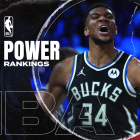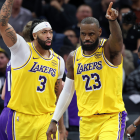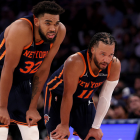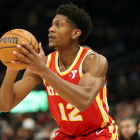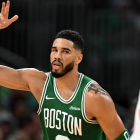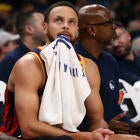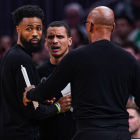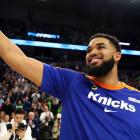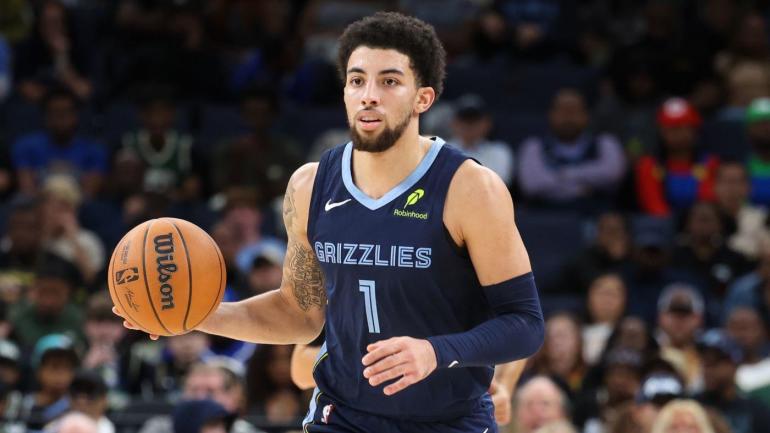
Fathers and sons have been a prominent part of recent NBA history. The 2024-25 season began with LeBron James and Bronny James becoming the first father-son duo in league history to play in the same game, and second-generation players are becoming far more frequent in the NBA as a whole. There are 29 of them in total in the league right now, and one of them just joined his father to make a bit of history.
Scotty Pippen Jr., the far less heralded son of Hall of Famer Scottie Pippen, racked up 11 points, 11 assists and 10 rebounds for the Memphis Grizzlies in a 128-104 victory over the Washington Wizards on Friday. That gave him the first triple-double of his young NBA career. His father, a six-time champion with the Chicago Bulls, earned 17 triple-doubles in his Hall of Fame career. Some helpful research revealed that this makes them the first father-son pair in the NBA play-by-play era, which started in 1996-97, to each record triple-doubles.
The very first father-son, triple-double duo in NBA history was Dolph and Danny Schayes. The elder Dolph Schayes, a Hall of Famer, recorded three career triple-doubles (1951, 1957 and 1960), per Basketball Reference. His son, Danny Schayes, filled up the stat sheet on Dec. 22, 1982, while playing for the Utah Jazz.
So why have there been only two father-son NBA duos to post triple-doubles? Well, remember, most of the most famous basketball families are largely built around a single star. Kobe Bryant had 21 triple-doubles in the NBA, for example, but his father, Joe "Jellybean" Bryant never had one. It's a similar story for Stephen Curry, who has 10, and his father Dell, who has none. In one ironic case, it is the less famous family member with the triple-doubles. Mychal Thompson has two triple-doubles, for instance, but Klay Thompson has yet to record one.
The obvious set you'd think would have notched triple-doubles in their career would be Domantas and Aryvdas Sabonis. Domantas is an All-Star with the Sacramento Kings, and Arvydas is a Hall of Famer, and both are known for their passing acumen despite playing center. The problem was that the elder Sabonis didn't get to the NBA until he was 31 and had dealt with a number of injuries. The elder Sabonis never even reached 10 assists in a game, but he also played 30 minutes per game in only one of his seven NBA seasons.
It's still pretty surprising that the Pippens were only the second family to finally get there. The younger Pippen went undrafted in 2022 and, after a season as a two-way player for the Los Angeles Lakers didn't lead to a full-time NBA contract, his long-term career prospects weren't especially bright. But he caught on with the injury-riddled Grizzlies a year ago and took advantage of all of the playing time they could offer. He has since emerged as a viable option on both ends of the floor, defending very well for his size while growing into a solid backup point guard on offense.
While the Pippens have joined this exclusive club, it likely won't be long before other NBA families join them. One of the top prospects for the 2026 NBA Draft is Cameron Boozer, son of former All-Star Carlos Boozer, who had a single triple-double in his career. One day, the Boozers will likely join the Pippens, and at the rate second-generation players are reaching the NBA nowadays, more are almost certainly going to follow.
Looking for more NBA coverage? John Gonzalez, Bill Reiter, Ashley Nicole Moss and special guests dive deep into the league's biggest storylines daily on the Beyond the Arc podcast.









